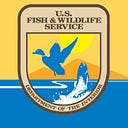American Indians and Conservation Artist Series Featuring Kevin Pourier
Earlier this year (2021), the U.S. Fish and Wildlife Service Museum and Archives commissioned three Indigenous artists to create contemporary art for its permanent museum collection. Each of the artworks will be featured in the museum exhibit, American Indians and Conservation, which is scheduled to open in late 2022 at the Service’s National Conservation Training Center in Shepherdstown, West Virginia.
Follow along the blog series to learn about the individual artists and their creation that will be an integral part of the upcoming American Indians and Conservation exhibit.
Meet Kevin Pourier of the Oglala Lakota in South Dakota!
What inspired you to be an artist?
Kevin: “I have always loved to make art since I was a young boy. In my later years, I got lost going down the wrong path in my life. I almost died from drugs and alcohol. When I became alcohol- and drug-free, art was what saved my life. I really believe in the healing powers of ‘making things.’ I am lucky to be able to live my life now the way I want to live it and make art.”
What art medium did you use?
Kevin: “The main medium I use is Buffalo Horn. This Buffalo Horn spoon has been cut, carved, and inlaid with crushed Mother of Pearl. The shine is natural. I have focused solely on this medium for over 30 years now.”
What inspired the bison horn spoon?
Kevin: “Working with Buffalo Horn is something very special to me. This material has a Spirit. Lakota believe that the Spirit of the Buffalo lives in the horn cap. When I decided to carve the herd of running Buffalo on the horn it just seemed like a perfect combination. The Buffalo are running in a herd, their Relatives.”
What is the significance of this art?
Kevin: “Buffalo are the Center of Lakota Lifeways. Making beautiful things from a material my Ancestors used is very important to me. We learned the family structure from observing the Buffalo Oyate (Family). When I draw a Buffalo herd, I am always moved by the love of family that Buffalo have for every one of the members of the herd.”
Why does conservation matter to you?
Kevin: “Since I became an artist, I have been inspired by every living thing around me. One of the main influences in my life has been the monarch butterfly. It came to me during one of our Sacred Ceremonies. Ever since then, I have had an enhanced awareness of their presence wherever I go. I have used the monarch image in my work along with many other of our winged, four-legged, and other Relatives that we share this world with. I have educated many people who have seen my work about the struggles these things have endured because of the behaviors of people. In 2017 the World Wildlife Fund named me a “Monarch Hero.” I was one of 7 others from around the country who have helped to save or bring awareness to the Monarch’s plight.
We have to commit to conservation for the survival of nature. My whole life as an artist has been committed to studying and paying attention to everything they do in their lives. I could not imagine not seeing something in the wild every day. I have changed peoples’ minds about these small and large beings and made them see the importance of their part in the whole scheme of things.
Art does have Power and through it I have given the Buffalo and Butterflies and Turtles and many other Beings we share this planet with a voice.”
Written by Kevin Pourier, Mikaela Oles, and Steve Floray with contributions from Melissa Castiano, Melissa Gonzalez
